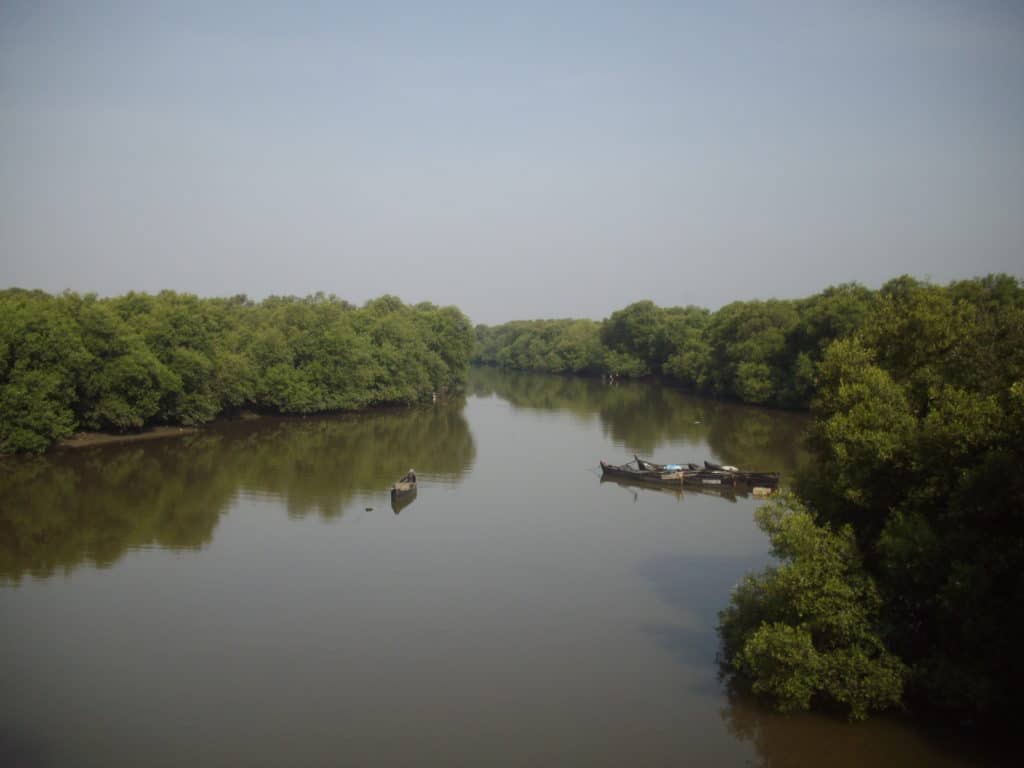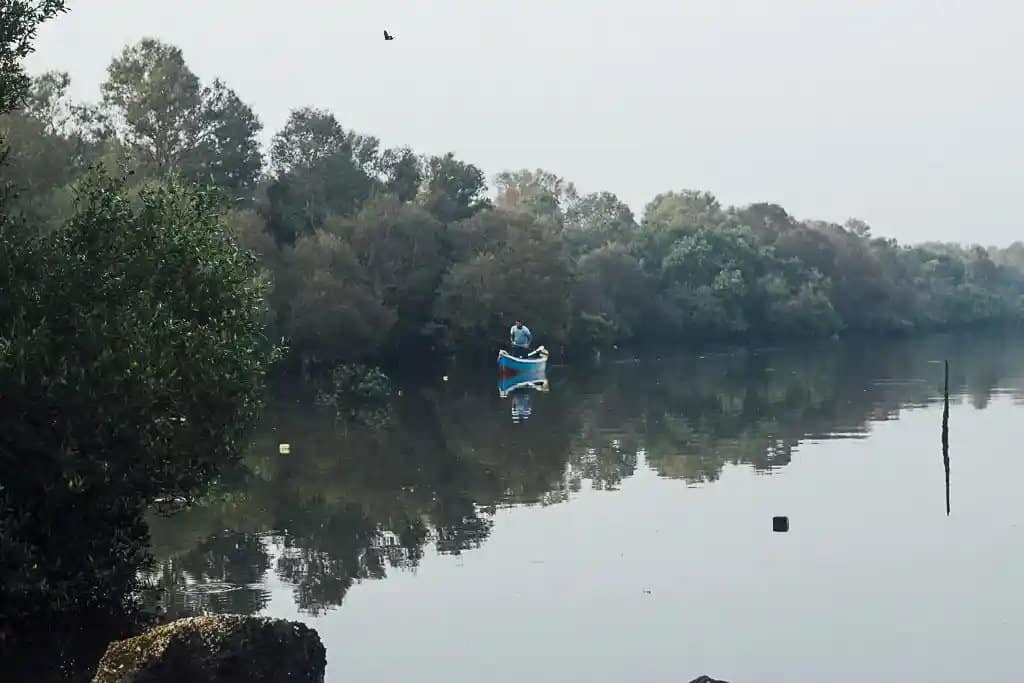Conservation Action Trust is a Mumbai-based non-profit organisation formed to protect the environment, particularly forests and wildlife. The main purpose of the Trust is to educate and enlighten decision makers and the public about the importance of forests for our survival. The role of forests in protecting the water security of the country is one of the major thrust areas of CAT. Debi Goenka is an Executive Trustee at Conservation Action Trust and a well-known environmentalist. Citizen Matters spoke to him about the threat to mangroves in Mumbai and other serious environmental concerns in the city.

You had fought a relentless battle to save the mangroves. How important are mangroves for biodiversity in Mumbai?
Mangroves are crucial for the survival of our planet. In Maharashtra, they are extremely critical since they protect the Mumbai Metropolitan Region comprising Mumbai city and suburbs, Thane, Navi Mumbai and Vasai-Virar from extreme climatic events. This is the financial engine that drives the country. Given the fact that huge areas of mangroves have been destroyed by government agencies and builders, the need to protect mangroves has become paramount.
How did your campaign get massive public support that forced the Ministry of Environment and Forests to create a mechanism within the government to declare mangroves as “eco-sensitive” species?
Getting the Government to accept mangroves as eco-sensitive species has been a long haul. Initially, we got the Maharashtra Government to accept that mangroves should be notified as a scheduled species under the Maharashtra Felling of Trees (Regulation) Act, 1964 way back in January 1987. The second step was to get mangroves included as ecologically sensitive species in the Coastal Regulation Zone notification of February 1991.
The third major step was to file a PIL in the Bombay High Court in 2004, with the help of some of the best lawyers in the country. This PIL resulted in a landmark interim order on 6th October 2005, followed by another landmark Judgement on 17th September 2018. Despite this Judgement, we find that the agencies that are supposed to be implementing this Judgement are dragging their feet. To make matters worse, even the Mangrove Cell that was set up for the purpose of protecting mangroves now wants to cut mangroves ostensibly to provide habitats for flamingos!
Read more: What can be done about forest fires in Aarey
What has changed in the battle to save the mangroves?
I think there have been some notable successes. When I first started campaigning for mangroves in 1983, most people did not know what mangroves were. Every time I said mangroves, the response would be mangoes! Today, I would say everyone in Mumbai knows what mangroves are. Secondly, the fishing communities are now solidly supporting the idea of protecting mangroves. Thirdly, there are now a number of groups all over the country that are now trying to save mangroves – not just us. This is another great step forward.
Please share some of your big success stories?
We were able to stop a builder from building a golf course on 500 acres of mangroves that he had illegally destroyed in Malad Creek in Mumbai. We were also able to stop another builder from destroying 430 acres of mangroves in Dahisar in Mumbai. We are now trying to stop CIDCO from building the new Navi Mumbai International Airport which is an ill planned project in the vicinity of the Karnala Bird Sanctuary, and which is a wetland site comprising of mangroves and mudflats, protected by a Supreme Court Order.
In 2018, Bombay High Court had directed the Maharashtra government to take over all mangroves on private lands, what has really been a driving force for you ?
The Bombay HC has directed that all mangrove areas in Maharashtra should be notified as “forests”. Government land with mangroves has to be handed over to the Forest Department. Private lands will be notified as forests and possession will remain with the owners. However, the Forest Department has been given the option of acquiring such privately owned mangroves under the Maharashtra Private Forests Acquisition Act. Sadly, this process has still not been initiated. In addition, the HC has directed that a 50 metre buffer zone be created around all government owned mangroves.
Despite court orders and National Green Tribunal interventions, there have been serious violations reported with regard to construction activities, cutting of trees and dumping of garbage.
Our expectation was that the Forest Department, as a field force, would be the best agency to protect mangroves on the ground. It now seems that there is no force, and no field, where the Department is active in the protection of mangroves. All that seems to be happening is a chain of meetings and exchange of letters. COVID19 has become a convenient reason for not doing any substantive field work. Despite the spate of complaints, there has been no action taken to restore mangroves that have been destroyed. Even the mangrove reforestation has been a dismal failure. Mangroves have also been illegally planted on mudflats and seagrass beds in violation of the CRZ Notification.
Please tell us about controversy surrounding Aarey forests and what its current status is?
The Maharashtra Government has recently notified 800 acres of land in Aarey as forests. Possession has been handed over to the Forest Department as well. This is a great step forward for the protection of Aarey forests, but I must add that this step was long overdue, and that Aarey should have been notified as forests way back in 1997 following the Supreme Court order of 12 December 1996 in the T N Godavarman case. However, the recent threat that is emerging is the attempt of the Film City to industrialise hundreds of acres of prime forest lands on the border of Sanjay Gandhi National Park.

Serious violations have also been reported in the Coastal Regulations Zone (CRZ) with regard to illegal constructions. New coastal road project also seen as a new threat. How you view these issues?
The coastal road in Mumbai is one of the most ill-conceived projects that I can think of. It is also one of the most expensive roads in the world, costing Rs.1,300 crores per km. To add insult to injury, all the citizens of Mumbai will be subsiding rich car owners. Ironically, this coastal road is being built parallel to the Metro 3, which has been built at considerable cost with the avowed objective of getting tens of thousands of cars off the road. And despite all the assurances given by the Governments and the Municipal Corporation, the real fear is that these reclaimed lands will be commercialised sooner or later under some garb or the other. And at the end of the day, if significant parts of south Mumbai are flooded because of sea level rise, who will really be using this coastal road? Even though we will all be paying for it!
What are some big ticket issues we need to focus on?
It is unfortunate that even though our Prime Minister was the first Chief Minister to officially recognise the importance of climate change (when he was CM of Gujarat), the issue of climate change has still not been factored in the decision making process. The Minister for Environment is only able to talk about how he has reduced the delays in granting environmental and forest clearances.
I think it is important that Governments take a long term view and factor in climate change in the decision making process. Secondly, we need to stop destroying our natural infrastructure under the garb of “infrastructure projects”.